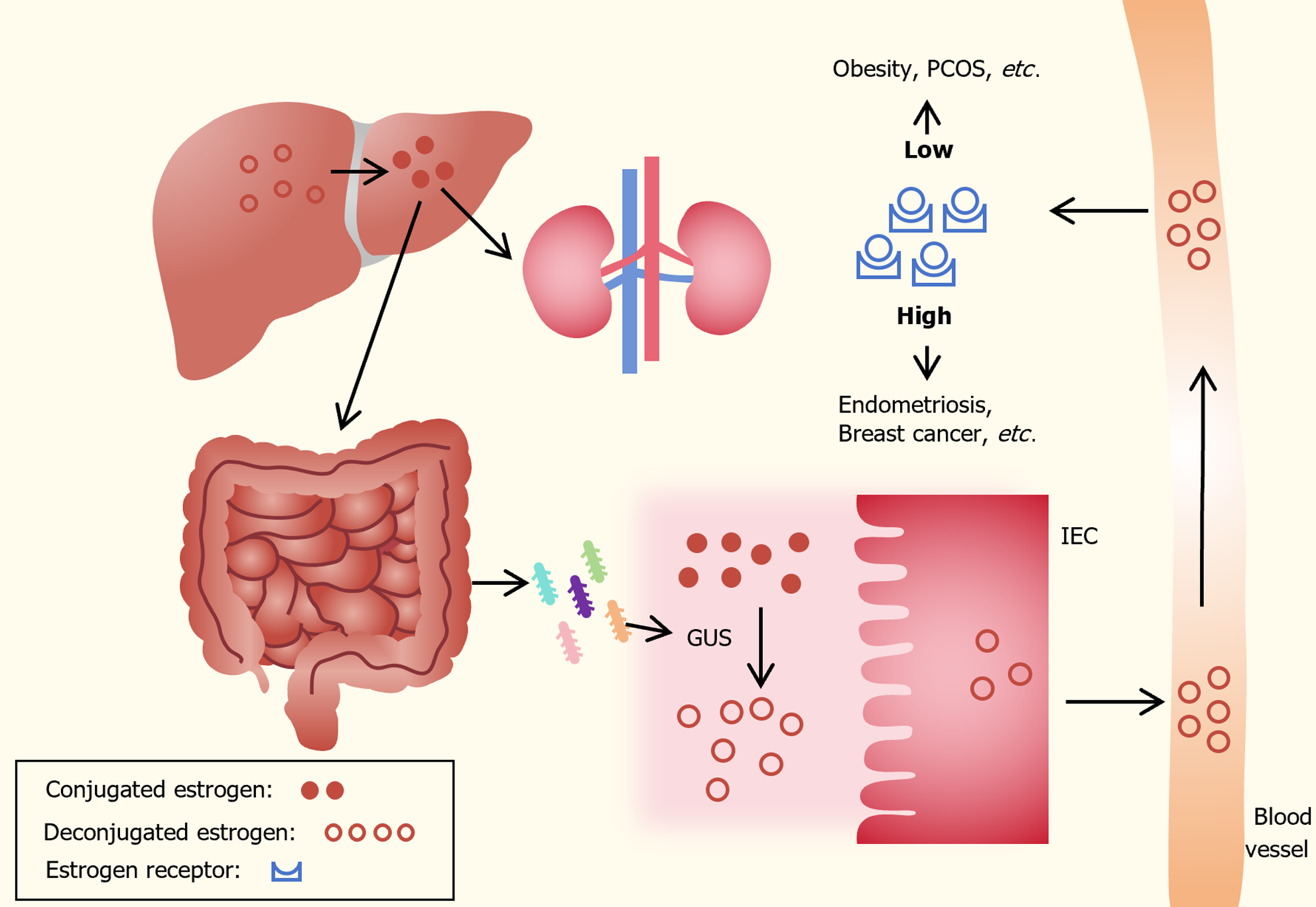Copyright
©The Author(s) 2024.
World J Gastroenterol. Mar 28, 2024; 30(12): 1655-1662
Published online Mar 28, 2024. doi: 10.3748/wjg.v30.i12.1655
Published online Mar 28, 2024. doi: 10.3748/wjg.v30.i12.1655
Figure 1 Effects of gut microbiota on estrogen metabolism.
Estrogens are primarily produced in the ovaries, adrenal glands, and adipose tissue and circulate in the bloodstream and first undergo metabolism in the liver, where estrogens are conjugated. Conjugated estrogens are eliminated from the body by metabolic conversion to water-soluble molecules, which are excreted in urine or bile into the gut. The gut microbiota significantly influences estrogen levels by secreting β-glucuronidase (GUS), an enzyme that converts conjugated estrogen into deconjugated estrogen in the gastrointestinal tract. This transformation allows it to bind to estrogen receptors, initiating downstream signaling and physiological effects. Decreased GUS activity may lead to reduced deconjugation of estrogen, resulting in decreased circulating estrogen levels and contributing to pathologies such as obesity and polycystic ovarian syndrome. In contrast, increased GUS activity can elevate estrogen levels, leading to conditions such as endometriosis and cancer. IEC: Intestinal epithelial cell; GUS: β-glucuronidase; PCOS: Polycystic ovarian syndrome.
- Citation: Wang MY, Sang LX, Sun SY. Gut microbiota and female health. World J Gastroenterol 2024; 30(12): 1655-1662
- URL: https://www.wjgnet.com/1007-9327/full/v30/i12/1655.htm
- DOI: https://dx.doi.org/10.3748/wjg.v30.i12.1655









